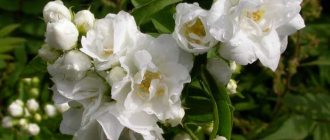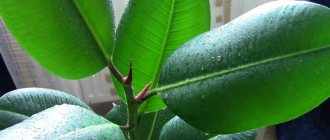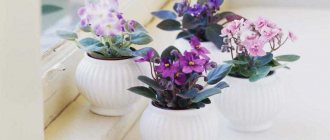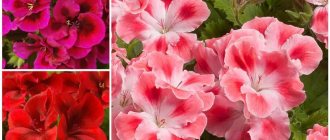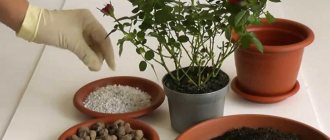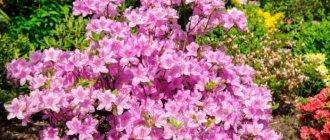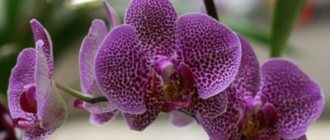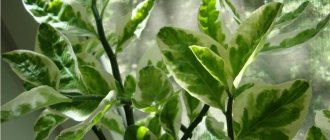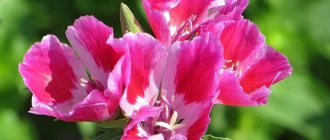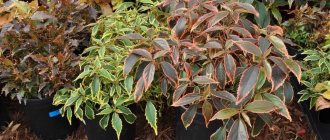Varieties of flowers
The technique is applicable both to new items that are exotic for Russian flower growers, and to long-familiar garden and indoor flowers that enliven window sills in homes, as well as flower beds near the house. In the table you can see which flowering varieties of annual and perennial plants are most often represented.
| begonia | dahlias | aquilegia | Lavatera (wild rose) |
| cyclamen | gerbera | tulips | yarrow |
| abutilone | phlox | ranunculus | nasturtium |
| camellia | purslane | lupine | Eschsolzia |
| pelargonium (geranium) | abutilone | viola | saxifrage |
| balsam | mimulus | cosmos | gypsophila |
| eustoma | periwinkle | liatris | mallow |
| brugmansia | marigold | chamomile | daisy |
| aster | asparagus | anemones | morning glory |
| acacia | bauhinia | astilbe | godetia |
| passionflower | eucalyptus | calla lilies | catnip |
| petunia | catharanthus | gladiolus | chicory |
| primrose | bloodroot | clematis | ageratum |
| mimosa | carnation | peony | cornflower |
| delphinium | irises | buddleya | gloriosis |
| sunflower | calendula | Cannes | hyssop |
| Snapdragon | lobelia | lily | day-lily |
| echinacea | matthiol | torenia | cineraria |
| chrysanthemum | hibiscus | castor bean | amaranth |
With the arrival of warmer weather, hybrids of perennial begonias bloom with all sorts of interesting colors: pink, red, white, yellow, orange. At this time, they are transplanted into open ground so that they become stronger and gain strength. For the winter, the green pets are returned to their homes. Photos of indoor flower seeds demonstrate that their small appearance sometimes causes them to be sold in granules.
Perennial flower beds
When forming a flower bed from perennials, it is important to correctly combine not only their color qualities, but also their geometric dimensions. Tall flowers are placed in the center or in the background, and low flowers are placed around the perimeter or in the foreground.
Correct zoning in the flowerbed
For a successful combination of certain types, it is important that they are not only compatible with each other, but also similar in appearance. For example, a close combination of evergreen bushes and deciduous ones looks very unnatural during the period when the leaves fall from the latter.
Dicotyledonous plants
Popular unpretentious plants are Uzambara violets, which bloom virtually all year round, gloxinia with large bells, streptocarpus, Achimenes, and columnea. They have excellent survival rates in city apartments and an attractive appearance.
Through seed propagation, new subspecies are discovered that have double flowers of various colors, such as blue, light blue, violet, pink, red and burgundy.
Lemon
It is quite possible to become the owner of a lemon tree and drink tea with your own lemons. You just have to wait for the harvest.
The planting material is the seeds of ripened fruits. They are treated with growth-stimulating drugs and planted in greenhouses with a 3 cm deepening. When shoots appear, they are watered, fed and sprayed daily.
For normal life, cuttings need to be provided with good lighting and warmth. Oranges, tangerines, and grapefruits are grown this way.
Examples of flower bed designs
Border
The simplest options for implementing flower beds are borders - narrow strips of plants, usually planted along paths, fences or hedges. The width of borders is taken to be about 20-30 cm. Both low-growing and tall flowers can be used in them.
Traditionally, the root systems of such borders are separated from the rest of the dacha or garden area. That is, it turns out that the roots are limited on one side by a path or fence, and on the other by special means: plastic shields, recessed stones or bricks, pieces of slate or tiles, and so on.
This is done to prevent the “curb” from growing in width, both for design and biological reasons. As a rule, border plants have a faster growth rate and therefore can pose a certain danger to other species, effectively depriving them of nutrition.
Rabatka
It is a neat type of border, however, its application is more universal. In fact, flowerbeds are flowerbeds with a width of 0.5 to 1.5 m and a length of several to several tens of meters, often with symmetry in length.
They are usually decorated with 1-3 types of plants, planted at strictly defined distances, usually in a line. Curtain is a type of flower bed in which only one type of plant is used, but there can be several flowers. The main thing in the design of a ridge is the same height of the plants.
Mixborder
In essence, it is a flowerbed in which the plants are combined in an arbitrary manner, as shown in the photograph. Sizes are also not regulated. However, even with such a maximally “democratic” approach, the mixborder still has certain rules, from which it is not recommended to deviate:
Compliance with all these requirements will not only make the mixborder the “highlight” of the garden and allow for continuous flowering, but will also significantly facilitate the gardener’s work. Actually, the mixborder was conceived by the designers to provide a spectacular look to a continuously blooming flower bed, combining a riot of colors with easy care.
monoflower
A flowerbed consisting of one type of plant. Despite its apparent primitivism, it is a rather difficult object to care for, since ensuring the same appearance of all plants (at least the same height and fullness) is quite problematic.
Reasons for planting monocultures in a flowerbed: from compatibility to some features of growing or appearance of plants. As a rule, monoflowers themselves are practically never found, but are parts of larger compositions.
Multi-level flower beds
They are flower beds where plants are separated not only by planting by area, but also by height. In fact, these are no longer even flower beds in the classical sense, but small architectural forms made from a variety of available materials - from wooden or plastic boxes to stationary buildings made of concrete or brick, often painted with different paints.
This approach allows you to combine plants that would have difficulty getting along in the same soil next door, since the soil at each level of the flowerbed can be completely cut off from the soil at other levels. In fact, each level has its own soil composition.
In addition, multi-level flower beds allow you to operate more freely with plant growth, allowing the use of solutions such as tall plants around the perimeter, which simply would not work elsewhere.
Vertical flower beds
They are structures extended upward. Vertical flower beds are very popular where you need to save space allocated for flowers. Such solutions allow you to experiment with flowers of different colors within a wide range.
Due to some features for perennials, they are used with some restrictions.
Alpine slide
This design is called a “rock garden”. This is actually no longer a flowerbed, but an entire landscape composition that imitates a mountain landscape. It includes not only flowers, but also all objects and landforms present in the mountains: from stones to various exotic shrubs and other elements. In the design of such objects, in addition to flowers, coniferous and deciduous plants, cereals, primroses, etc. are used.
An alpine slide is often used as a separate design element. It is well isolated from objects such as playgrounds, flower beds with lush flowers and outbuildings. The goals pursued here are not only aesthetic, but also, to some extent, “ideological”, since a piece of wild mountain landscape does not fit well with a cabinet in which a rake is stored or with a bathroom.
It is necessary to locate such an object in some remote corner of the garden, away from the “bustle of this world.” Actually, the rock garden is located next to the recreation area. As a rule, when creating rock gardens, there are no problems with plant compatibility, since it imitates their natural habitat.
Ornamental plants
There is no less demand for decorative foliage flora, whose list has been replenished:
- Chlorophytum.
- Dracaena.
- Japanese fatsia.
- Jacaranda.
- Coleus.
- Ficus Benjamin.
- Cyperus.
- Jacaranda.
- Albizia.
- Crossandra.
- Guava.
- Hosty.
- Delonixa.
- Chamerops.
These specimens love to bask in the sun and receive fertilizer. In the winter season, when the central heating is turned on, they are disturbed by dry air, which causes them to shed leaves. It is better for them to overwinter in a cool place with constant spraying.
This is not a complete list of options for which indoor flowers can be grown from seeds. Tropical fruit varieties such as passion fruit, figs, kiwi, and feijoa are in demand.
Palm trees
A spectacular tree can be grown from a date kernel. With regular watering, it will take two weeks for a sprout to appear. Initially, it does not need to be fertilized, but if there is a noticeable upward thrust, micronutrients will be required. Quick adaptation will soon allow you to admire a luxurious, beautiful tree.
For those who are away from home for a long time due to business trips, Nolina is suitable. Its bottle trunk stores moisture, so bocarnia can withstand several weeks without watering.
At home, you can even grow a banana from seeds, but the fruits of such varieties are not very tasty and are grown more for decorative reasons.
Pepper
The miniature plant sprouts magnificently not only in the garden, but also on the windowsill and begins to bear fruit in the same year. Variegated peppers are elegant, looking like a Christmas tree. They are used for their intended purpose as food, and upon final ripening they represent raw materials for the future harvest.
The height of indoor peppers varies from 25 to 65 cm, height depends on the plant variety
Selecting and buying indoor flower seeds will not be difficult, thanks to the wide assortment in online store catalogs. In addition, they can be ordered for delivery by mail.
Varieties of black tomatoes for the greenhouse
Popular varieties of black tomatoes for greenhouses include: Brown Sugar, Black Gourmet, Black Moor, Black Bison, Black Pineapple, Chocolate Marshmallow, Black Gourmet, Kumato, Black Cherry, De Barao Black, Ashdod, Indigo Rose, Ivan da Marya , Gypsy.
Brown sugar
Fruiting begins 3-3.5 months after germination. The tomatoes are fleshy, tasty, and sweetish. From 1 sq. m you can collect about 7 kg. The weight of one tomato is 130-150 g.
Black gourmet
The crop is mid-season, tall, and requires the formation of a bush with one stem and a garter. Productivity per 1 sq. m – 6 kg. Salad type tomatoes, juicy and aromatic. The color of the tomato is rich, garnet with green ribbing.
Moor black
The bush grows up to 1.3 meters in height. On one bush, from 9-11 brushes are formed. One brush carries 8-10 tomatoes. Productivity per 1 sq. m of territory – 6 kg. The fruits are elongated, rich chocolate color, fleshy, sweet, weighing 50 g each. The skin is dense, not prone to cracking. The variety does not tolerate drought or climate differences.
Bison black
Tall variety. The bush requires tying to a support. From 1 bush the yield is 3 kg. The fruits are fleshy, round, brown in color, with slight ribbing at the stem.
Black pineapple
The variety is tall, medium ripening. The fruits are juicy, round, brown in color with greenish splashes, weighing 400 g. The pulp of the tomatoes is pink-greenish-yellow.
Marshmallows in chocolate
Productivity per 1 sq. m – 5.5 kg. The weight of a tomato is 200-130 g. The tomatoes are round, juicy, red-brown in color, ribbed at the base. The culture is resistant to many types of diseases.
Black goddess
The fruits of the crop are round, juicy, weighing 400 g each. The color of the tomatoes is pomegranate-chocolate. Yield indicator per 1 sq. m – 6 kg. The aroma is reminiscent of a fruit mixture.
Kumato
The variety is tall, reaching a height of 2 meters. The fruits are black with a blue tint, weighing 60-80 g. The tomatoes are juicy, with a sweetish taste. Tomatoes last a long time. From 1 sq. m collect 15 kg.
Cherry black
Cherry tomatoes are of medium ripeness and produce fruit 120 days after the first shoots appear. Productivity per 1 sq. m – 3-3.5 kg. Rarely from 1 sq. m of territory you can collect up to 6 kg. The fruits are dense, round, juicy, with a pleasant mild aroma.
De barao black
Mid-season variety. It begins to bear fruit 110-120 days after germination. The tomatoes are oval-shaped, fleshy, rich burgundy color. The fruits have the color of rotten cherries. The variety is resistant to late blight and tolerates low temperatures well.
Ashdod
The yield per plant is 17 kg. The plant grows up to 0.8 meters, rarely up to 1 meter. The tomatoes are round, dark burgundy in color. The pulp is juicy and fleshy.
Indigo Rose
The crop grows up to 130 cm. The weight of tomatoes reaches 40-60 g. The fruits are dense, blue-black in color. The culture is resistant to late blight and frost.
Ivan da Marya
The variety is early ripening, grows up to 160-170 cm in height. The stem is weak-leaved and requires tying to a support. The tomatoes are round, dark brown in color with purple spots. From 1 sq. m you can collect about 13-15 kg. The weight of one fruit is 200 grams.
Gypsy
The culture is of medium ripening, reaches 0.4 meters. Productivity per 1 sq. m – 7-7.5 kg. The weight of the tomato reaches 180 g. The tomatoes are fleshy, round, red-brown, purple-brown. They tolerate long-distance transportation and long-term storage.
Landing details
For a successful result, planting is carried out in the spring, after treating the seed with a stimulant, for example, Epin. They resort to the stratification method by placing the material in the refrigerator for two days on a damp cloth in a bag. The container is equipped with drainage holes and drainage made of pebbles and broken bricks.
You can use:
- plastic mini-greenhouses;
- peat cups;
- small ceramic pots.
The dimensions of the container increase according to the dimensions of the growing young animals. Light soil should absorb water easily.
They take a purchased substrate or combine fertilizers with peat and sand. The ingredients of the composition are pre-calcined in the oven to prevent infections. The dishes are filled, leaving 1-2 cm on top, slightly compacting the soil. For uniform distribution, small varieties are mixed with sand, slightly pressing them into the top layer.
After planting, water with settled and warm liquid, preferably with a spray bottle. The devices are covered with polyethylene and placed in a sunny place. The condensate that appears is removed by opening the greenhouse slightly. Ventilation is carried out three times a day to prevent mold or mildew from occurring.
Systematic moistening is carried out. When young sprouts peck, the film is removed; now they need the sun, but not direct scorching rays.
On short daylight hours, additional lighting is installed. Three true leaves indicate that the time has come to place them in separate pots by picking. Mineral and organic fertilizers will help improve the development of children under their care. Flowering can be expected in the second year of life.
Indoor flowers from seeds at home have enviable vitality, they are not affected by insect pests and infectious diseases, which greatly facilitates care, and the room is transformed before our eyes, gaining comfort and beauty.
For a small price, you can grow useful medicinal plants, all kinds of vegetable, spicy, berry crops, rare exotic fruits, decorative flowers and even mushroom mycelium from seeds on your balcony or in the garden.
Features of growing perennials
Perennial plants have some differences from annuals; caring for them, although less expensive, however, requires greater systematicity and self-organization.
For example, perennial flowers are more demanding on regular watering than annuals (of course, we are not talking about drought-resistant plants). This is due, first of all, to their deeper root system.
In addition, perennials, staying in the same soil, deplete it. Therefore, it is highly recommended to apply organic fertilizers at the beginning and end of the season. Such fertilizing is sufficient to ensure normal vegetation of perennials, however, flowering may require the use of mineral fertilizers.
Feeding perennial plants
Typically, perennials are less demanding on the amount of fertilizing than annuals, but much depends on the degree of decorativeness of the plant and its adaptation to environmental conditions. The influence of selection also plays an important role: the longer a particular variety has been bred, the greater its need for additional feeding.
An important detail in growing perennials is pruning their above-ground parts (stems, branches, etc.) and maintaining their root system in normal condition. The rate of growth of the plant and the likelihood of its flowering depend on the degree of density of the crown, and its entire existence depends on how free the root system feels.
Periodically, twice a year, it is necessary to monitor the condition of the roots of perennials. In case of excessive thickening, carry out operations to plant perennials or remove excess or diseased roots.
Thinning pansies
Weeds pose a separate problem for perennials. As practice shows, the use of such a simple method as mulching can solve this problem. This also saves much-needed water for perennials by preventing it from quickly evaporating from the soil surface.
